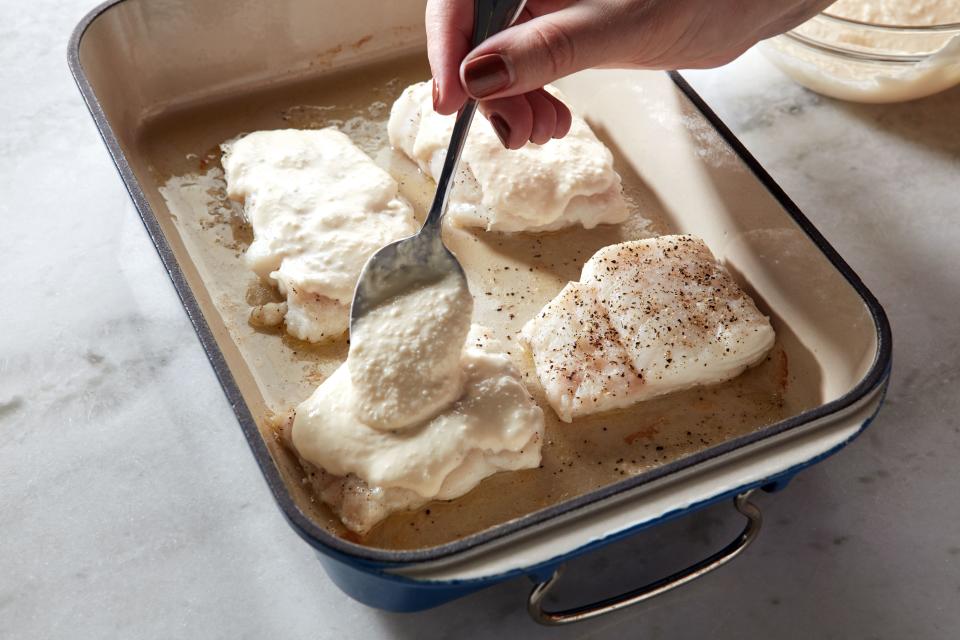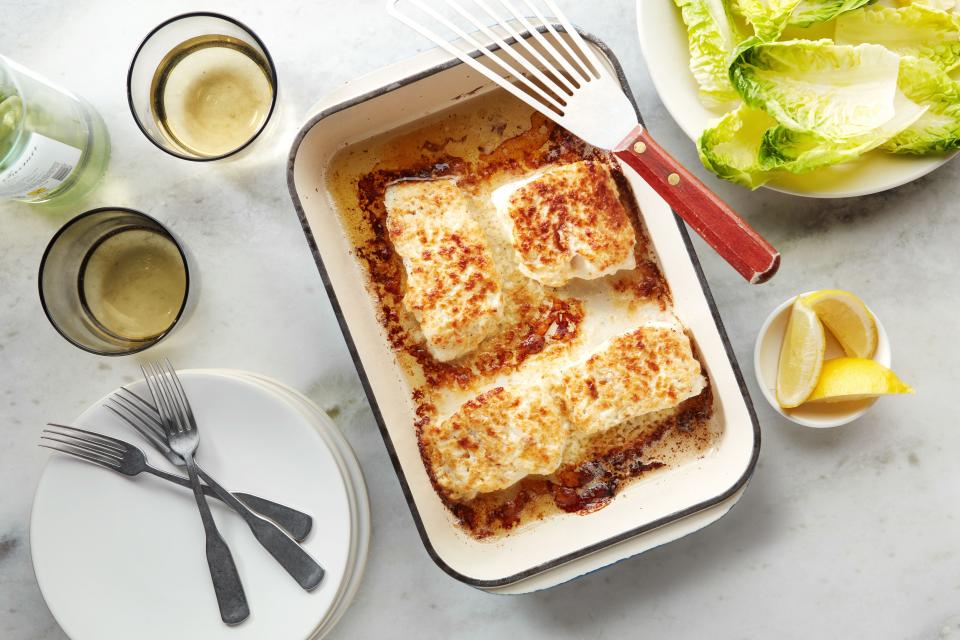Forget What You’ve Heard About Not Serving Seafood With Dairy
Of all the cooking maxims from around the world that have passed into the American culinary canon, few have cemented themselves into our brains so fully as the Italian tradition of keeping seafood and dairy apart. When I began to write The Pacific Northwest Seafood Cookbook, I didn’t plan to shoot down long held culinary beliefs—I just wanted to share easy recipes that would encourage people to get over their fears of cooking fish. I quickly learned that to do that, though, I needed my readers to let go of assumptions like thinking cheese and seafood are magnetic opposites. (Cue the Mythbusters theme song…)
The doctrine of separation comes from Italian cuisine: Not only do Italy’s cheese-making regions and its seafood regions tend to be different places, but both ingredients keep poorly. Prior to refrigerated transport, carrying your pesce from Puglia to Piedmont probably would have resulted in some pretty stinky swordfish. Italy’s oily fish—like sardines and mackerel—don’t really call out for the added fats of cheese, and many of the leaner fish—say, flounder or sole—tend to be delicate in texture and flavor, responding better to brief encounters with oil (or yes, sometimes butter) than the heft and complex flavor of cheese.
That’s not to say Italians couldn’t pair those fish with cheese—I’ll order a pizza with anchovies (from Italy or Oregon) any day. But in the Pacific Northwest, we also have fish like halibut, which is so lean that it requires either extremely careful cooking or plenty of fat—and possesses the structural fortitude to survive both the chilly northern Pacific and a blanket of dairy.
As chefs around the region began to send me recipes for the book, I quickly realized that cultured dairy—fermented milk products like sour creams and cheeses—was not only considered acceptable for cooking Pacific Northwest seafood: many find it essential. There was cultured butter in the steamed clams from Bainbridge Island’s Hitchcock, Eastern European sour cream in the Azeri-style halibut from Portland’s Kachka, and four different kinds of cheese in the Dungeness crab mac and cheese from San Juan Island’s Friday Harbor House. Crème fraîche, a French style of soured cream, shows up three times.

Fish with Dairy - PROCESS
As I began to test recipes, I took a tentative step into marrying cheese and seafood with a Parmesan-laced razor clam risotto. No Italians dropped dead of shock, and the dish only improved. As I thought it over, plenty of examples of delicious dairy-and-seafood combinations came to mind. Bagels and lox. Tuna melts. Fish chowder. Caesar salad. These gave me the confidence to buck the rules in a big, bold, and completely worthwhile way: baking halibut under a mix of mayonnaise, roasted garlic, and a flurry of Parmesan until the cheese bubbles up and browns, forming a light crust as its moisture melts into the flaky fish below.
The result—this roasted garlic and Parmesan baked halibut dish—serves as an easy entry point for people first exploring eating fish (covering almost anything in cheese has a way of doing that), those making their first attempts at cooking fish (the added moisture makes it hard to mess this up), and anyone looking to a tasty way to blow up an outdated culinary rule.
Roasted Garlic and Parmesan Baked Halibut
Originally Appeared on Epicurious


